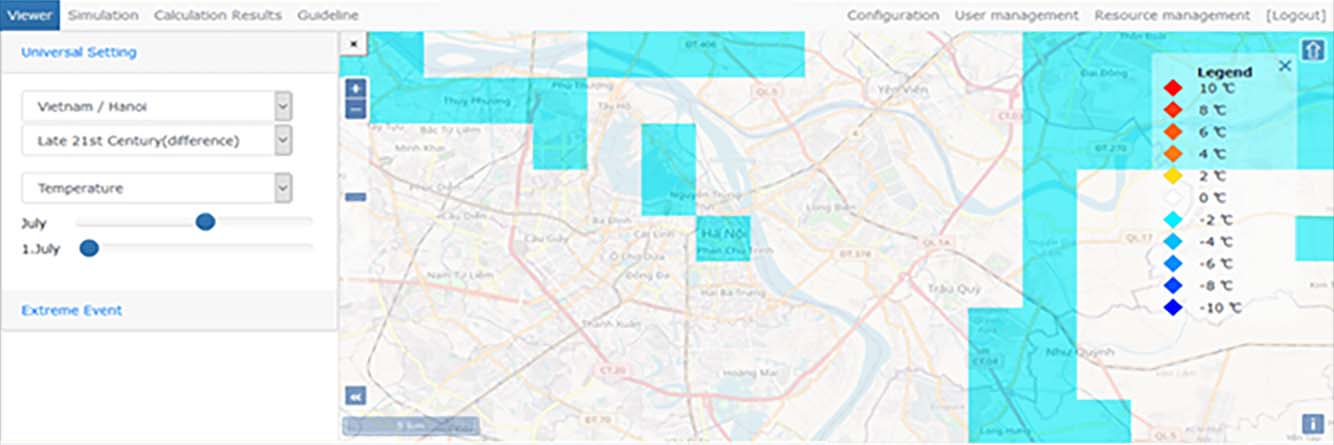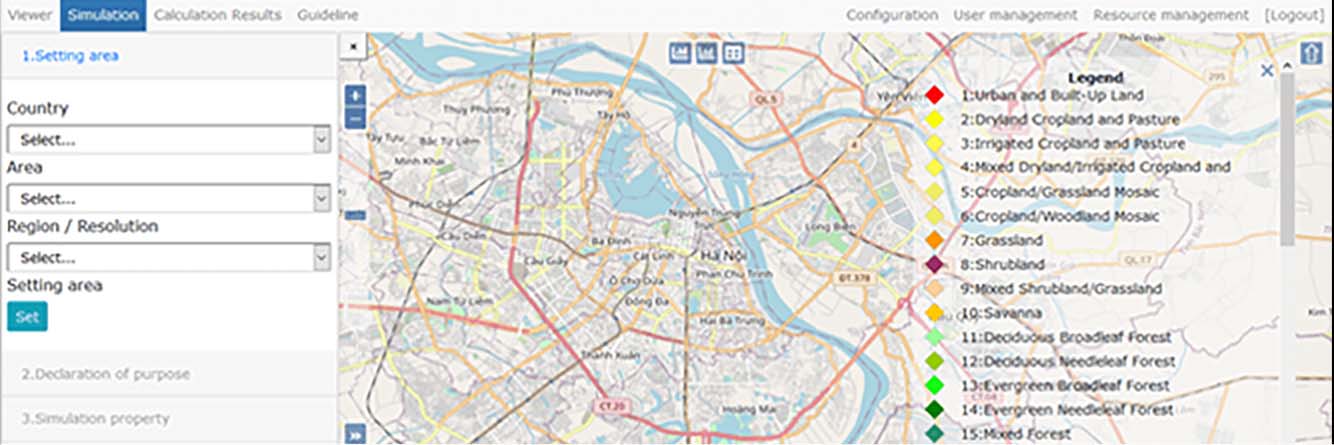Climate change projections
for Southeast Asian mega-cities
Local impacts in urban areas are influenced by both global climate change and local urbanization, especially in major Southeast Asian cities.
In the future, this tendency will not stop in these cities.
However, most of the climate downscaling studies have not considered future changes of both land-use and anthropogenic heat release.




